($18, Seaview Imports):  Château de Corcelles, an historic property located just east of Villé-Morgon, produces a range of Beaujolais. They also produce this wine, entirely from Gamay, presumably, from vines that are located just outside of the Beaujolais delimited zone. Though it has the charm of Beaujolais, they can’t legally call it that. … Read more
Château de Corcelles, an historic property located just east of Villé-Morgon, produces a range of Beaujolais. They also produce this wine, entirely from Gamay, presumably, from vines that are located just outside of the Beaujolais delimited zone. Though it has the charm of Beaujolais, they can’t legally call it that. … Read more
All posts by admin
Louis Max, Côtes-du-Rhône (Rhône Valley, France) 2018
($15, HB Wine Imports): 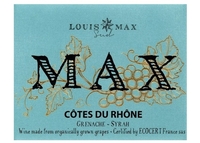 As this wine shows, wines from the broad Côtes du Rhône appellation can provide an excellent pleasure-to-price ratio. A balanced and lively Grenache and Syrah blend, it has good concentration and the oomph you would expect from the south of France. … Read more
As this wine shows, wines from the broad Côtes du Rhône appellation can provide an excellent pleasure-to-price ratio. A balanced and lively Grenache and Syrah blend, it has good concentration and the oomph you would expect from the south of France. … Read more
Château de la Maltroye, Chassagne-Montrachet 1er Cru (Burgundy, France) Clos du Château de la Maltroye 2018
($96, Jeanne-Marie de Champs Selection):  Château de la Maltroye, a consistently reliable producer of both red and white wines, succeeded admirably in 2018. This white, from their monopole, exhibits the broader and weightier minerality characteristic of Chassagne, compared to Puligny. Good acidity balances and amplifies its charms. … Read more
Château de la Maltroye, a consistently reliable producer of both red and white wines, succeeded admirably in 2018. This white, from their monopole, exhibits the broader and weightier minerality characteristic of Chassagne, compared to Puligny. Good acidity balances and amplifies its charms. … Read more
Gallina de Piel, Empordà (Catalonia, Spain) “Roca del Crit” 2018
($30, Bluest Sky Group):  Roca del Crit (screaming rock) was a place behind El Bulli where, the story goes, David Seijas, the sommelier at that famed restaurant, could escape and scream to relieve tension from work. Roca del Crit is more robust than its stable mate, Mimetic, with a focus more on minerals and earth. … Read more
Roca del Crit (screaming rock) was a place behind El Bulli where, the story goes, David Seijas, the sommelier at that famed restaurant, could escape and scream to relieve tension from work. Roca del Crit is more robust than its stable mate, Mimetic, with a focus more on minerals and earth. … Read more
Gallina de Piel, Calatayud (Aragón, Spain) “Mimetic” 2018
($15, Bluest Sky Group):  Though I’ve given some background on the Gallina de Piel wines previously, it bears repeating because their wines represent great bargains. So, it’s worth hearing the story again. Two sommeliers, one of whom, David Seijas, worked at El Bulli, named the best restaurant in the world five times by Restaurant magazine, founded Gallina de Piel. … Read more
Though I’ve given some background on the Gallina de Piel wines previously, it bears repeating because their wines represent great bargains. So, it’s worth hearing the story again. Two sommeliers, one of whom, David Seijas, worked at El Bulli, named the best restaurant in the world five times by Restaurant magazine, founded Gallina de Piel. … Read more
Herdade do Esporão, Vinho Regional Alentejano (Portugal) “Monte Velho” 2019
($9, Now Wine Imports): 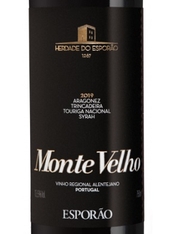 Looking for value? Look no further than this charming and substantial wine. Weighing in at a modest 13.5 percent-stated alcohol, it delivers dark fruit flavors intertwined with spicy and earthy ones. Suave tannins allow immediate enjoyment. Good acidity keeps it fresh and lively. … Read more
Looking for value? Look no further than this charming and substantial wine. Weighing in at a modest 13.5 percent-stated alcohol, it delivers dark fruit flavors intertwined with spicy and earthy ones. Suave tannins allow immediate enjoyment. Good acidity keeps it fresh and lively. … Read more
Cantina Sanpaolo, Greco di Tufo DOCG (Campania, Italy) 2017
($20, Enotec Imports, Inc):  Greco di Tufo, one of Italy’s premier white grapes, is rarely found outside its home in Campania. Sanpaolo’s is an excellent example, full-bodied, yet crisp. It is mineral-infused, reflecting the lava-like residue of Vesuvius. Its acidity imbues it with energy and magnifies its charms. … Read more
Greco di Tufo, one of Italy’s premier white grapes, is rarely found outside its home in Campania. Sanpaolo’s is an excellent example, full-bodied, yet crisp. It is mineral-infused, reflecting the lava-like residue of Vesuvius. Its acidity imbues it with energy and magnifies its charms. … Read more
Louis Latour, Corton-Charlemagne Grand Cru, Burgundy, 1978
 Drinking Window: 2021 – 2021
Drinking Window: 2021 – 2021Louis Latour, Corton-Charlemagne Grand Cru, Burgundy, 1979
 Drinking Window: 2021 – 2021
Drinking Window: 2021 – 2021Louis Latour, Corton-Charlemagne Grand Cru, Burgundy, 1982
 Drinking Window: 2021 – 2021
Drinking Window: 2021 – 2021Louis Latour, Corton-Charlemagne Grand Cru, Burgundy, 1985
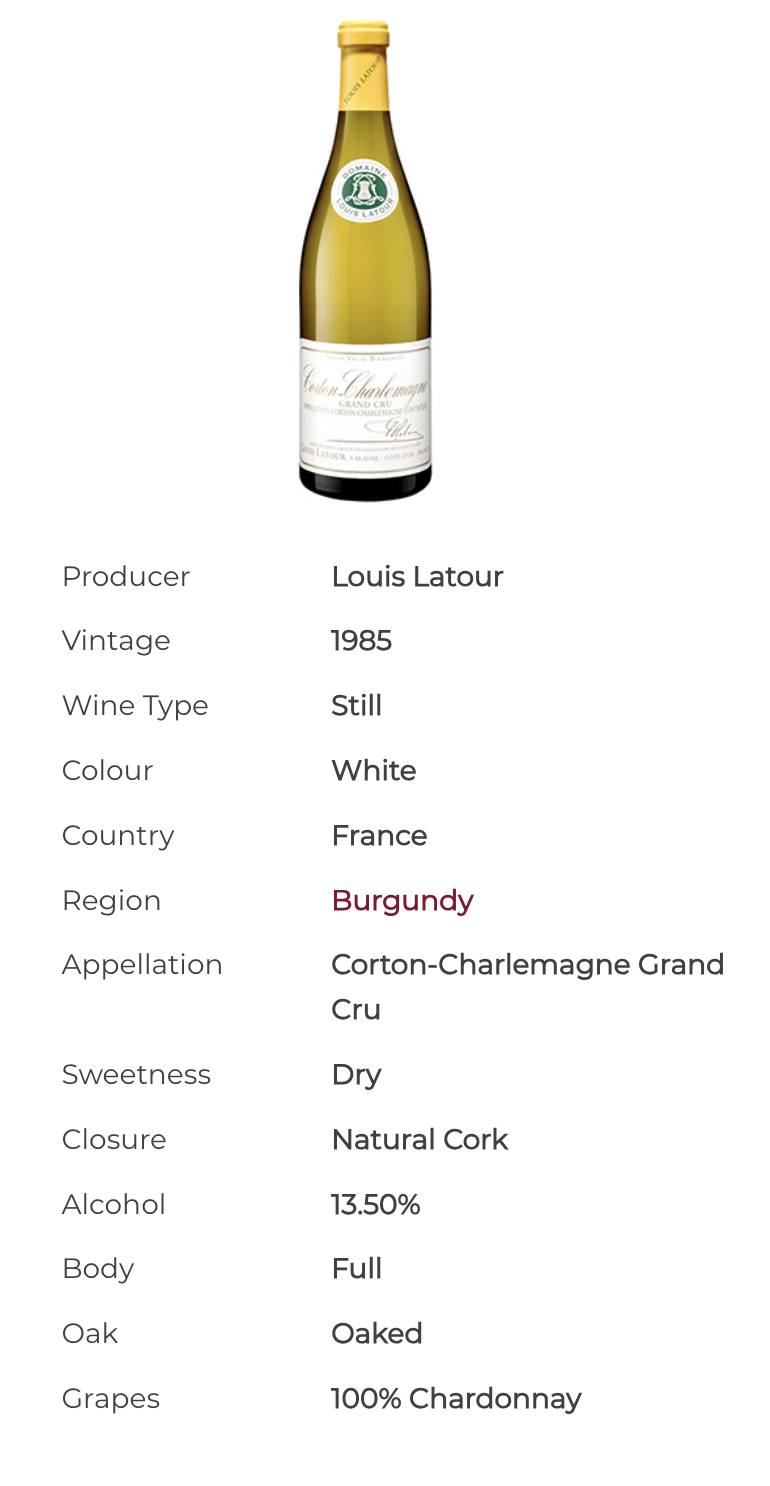 Drinking Window: 2021 – 2022
Drinking Window: 2021 – 2022Louis Latour, Corton-Charlemagne Grand Cru, Burgundy, 1989
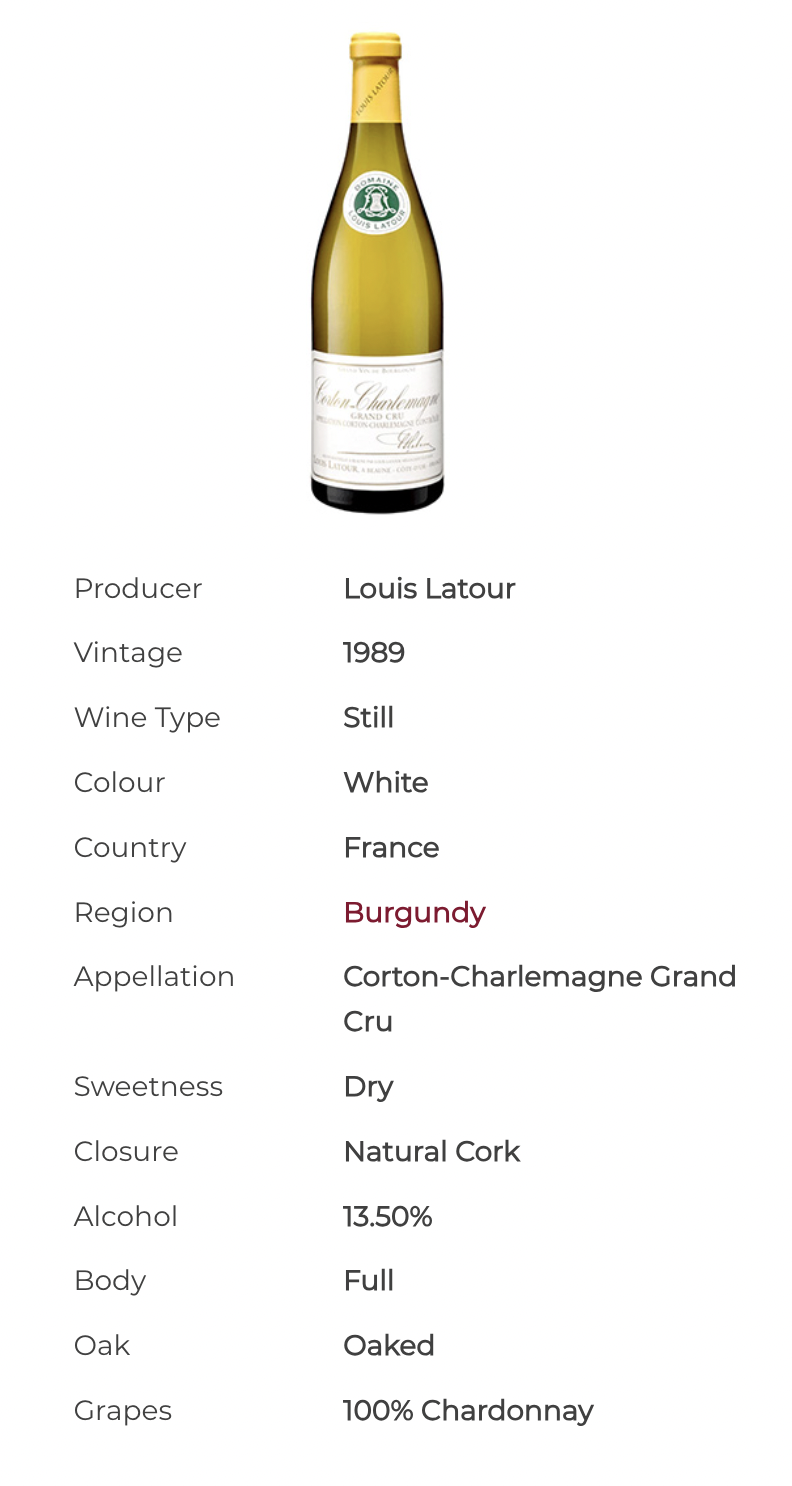 Drinking Window: 2021 – 2025
Drinking Window: 2021 – 2025Louis Latour, Corton-Charlemagne Grand Cru, Burgundy, 1990
 Drinking Window: 2021 – 2025
Drinking Window: 2021 – 2025Louis Latour, Corton-Charlemagne Grand Cru, Burgundy, 1996
 Drinking Window: 2021 – 2022
Drinking Window: 2021 – 2022Louis Latour, Corton-Charlemagne Grand Cru, Burgundy, 1997
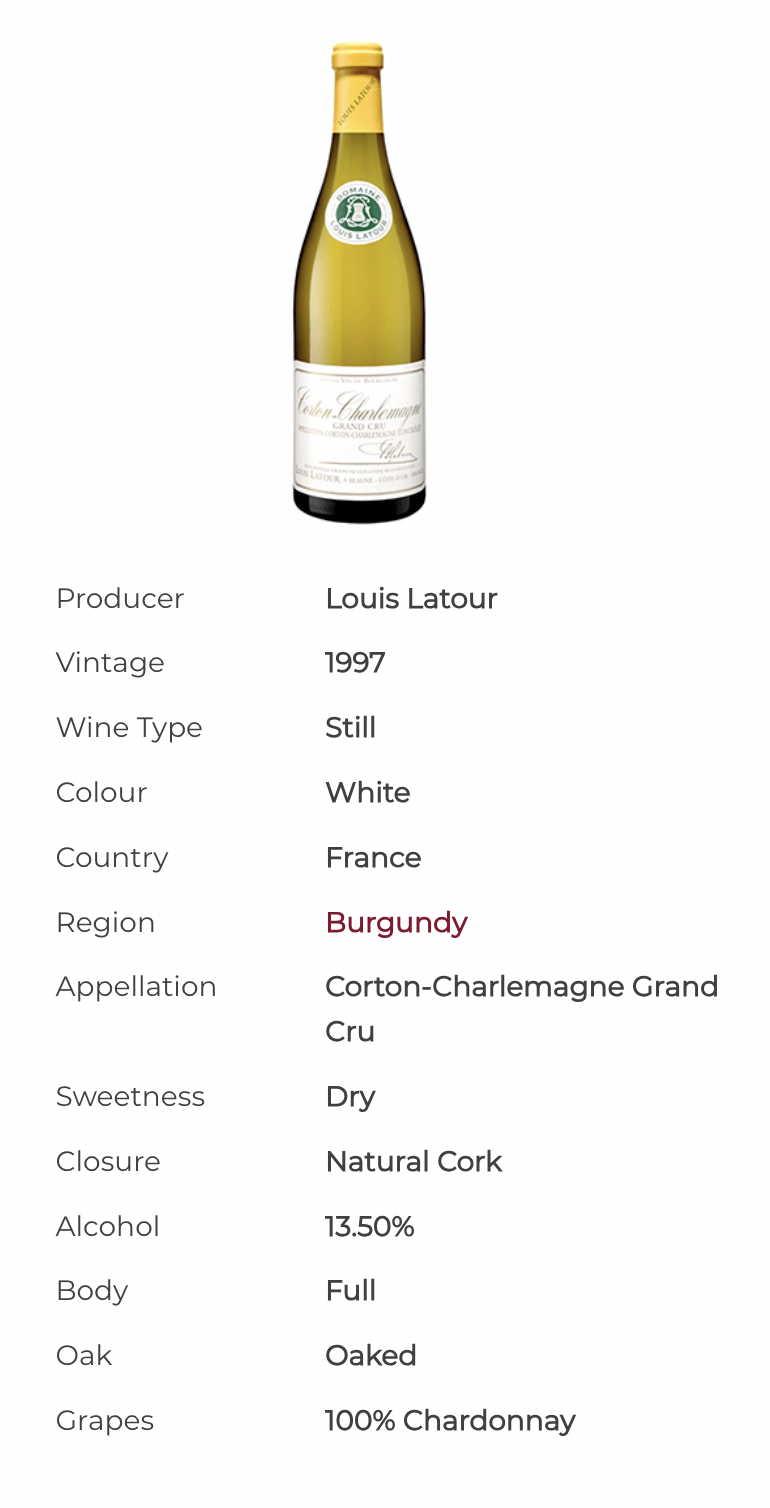
Louis Latour, Corton-Charlemagne Grand Cru, Burgundy, 1999
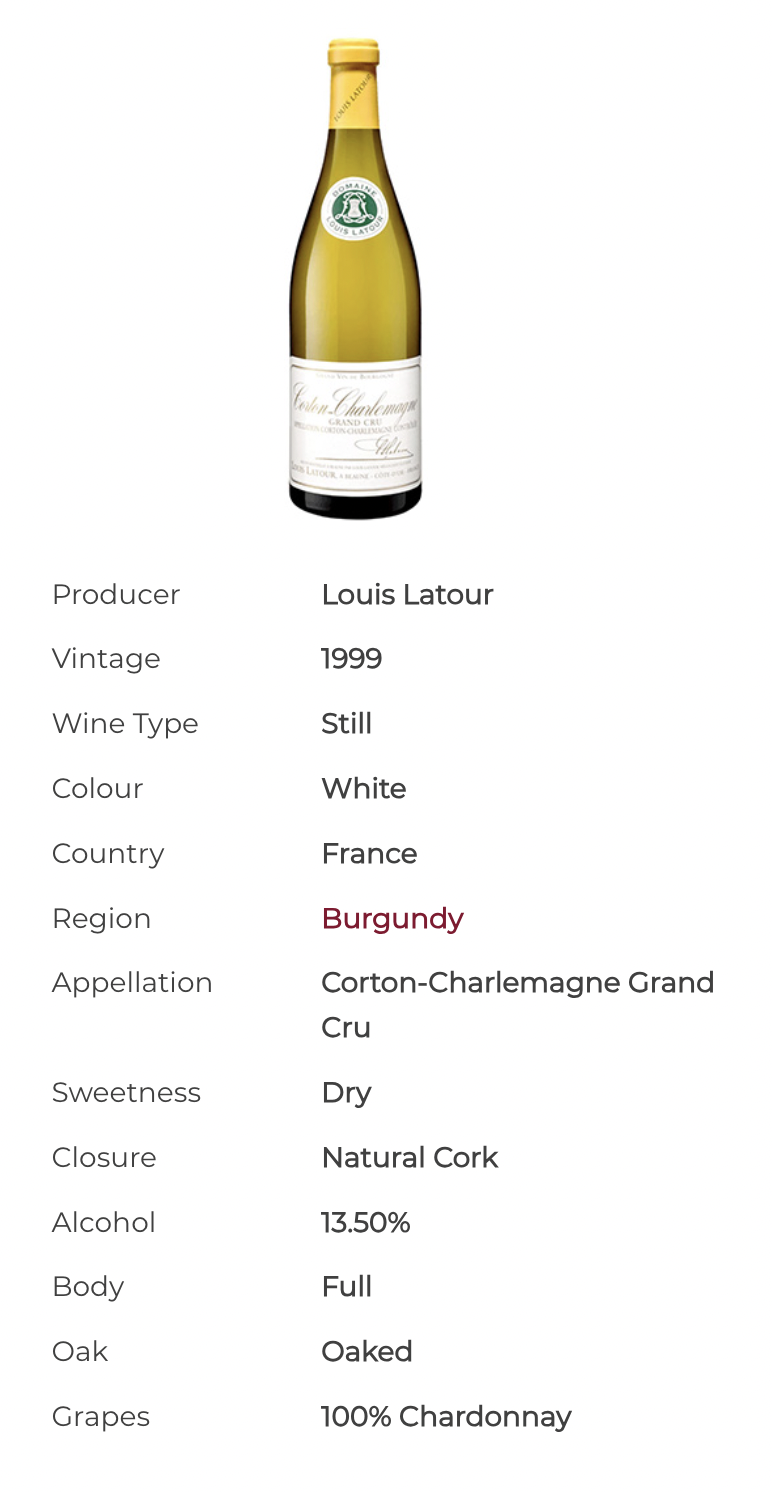 Drinking Window: 2021 – 2028
Drinking Window: 2021 – 2028Louis Latour, Corton-Charlemagne Grand Cru, Burgundy, 2002
 Drinking Window: 2021 – 2023
Drinking Window: 2021 – 2023Louis Latour, Corton-Charlemagne Grand Cru, Burgundy, 2004
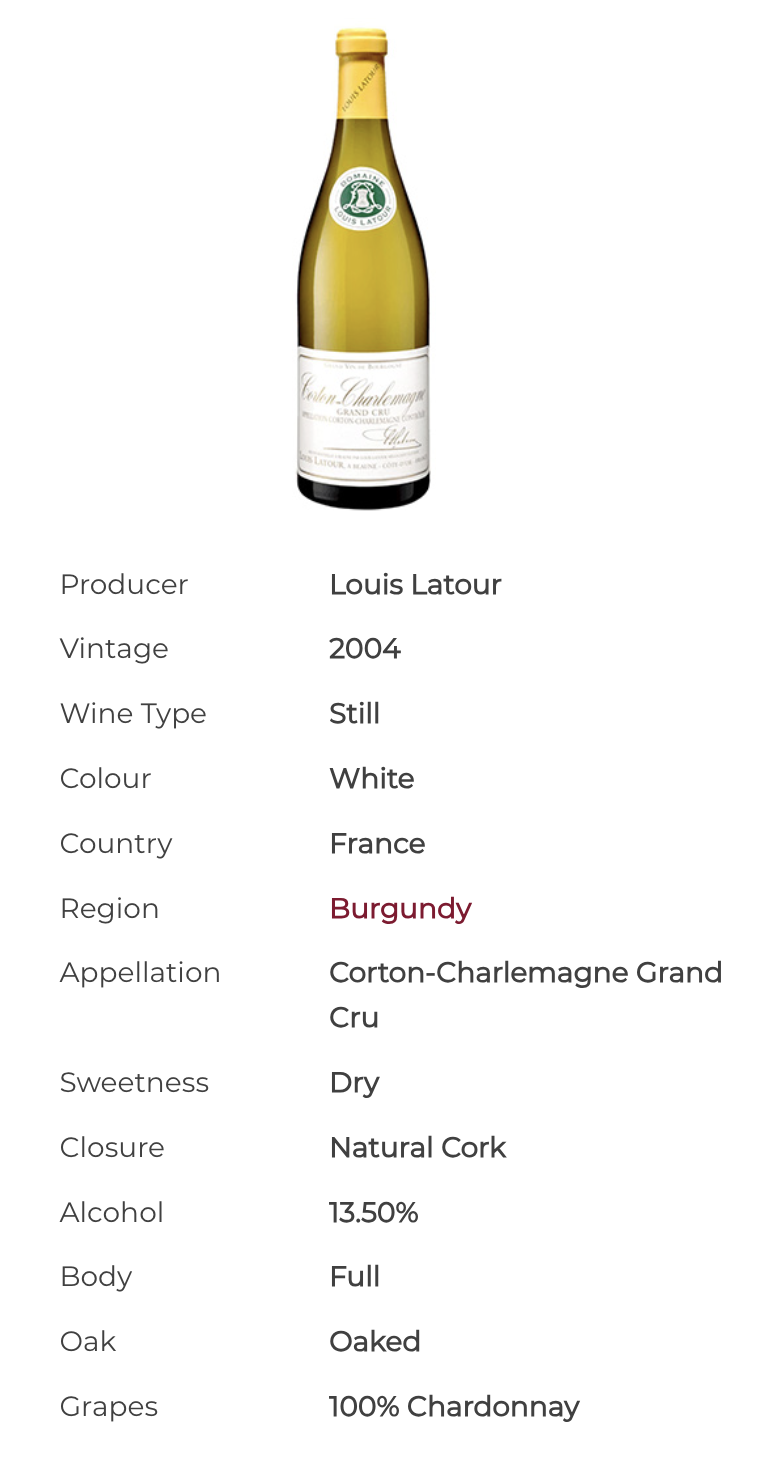 Drinking Window: 2021 – 2031
Drinking Window: 2021 – 2031Louis Latour, Corton-Charlemagne Grand Cru, Burgundy, 2005
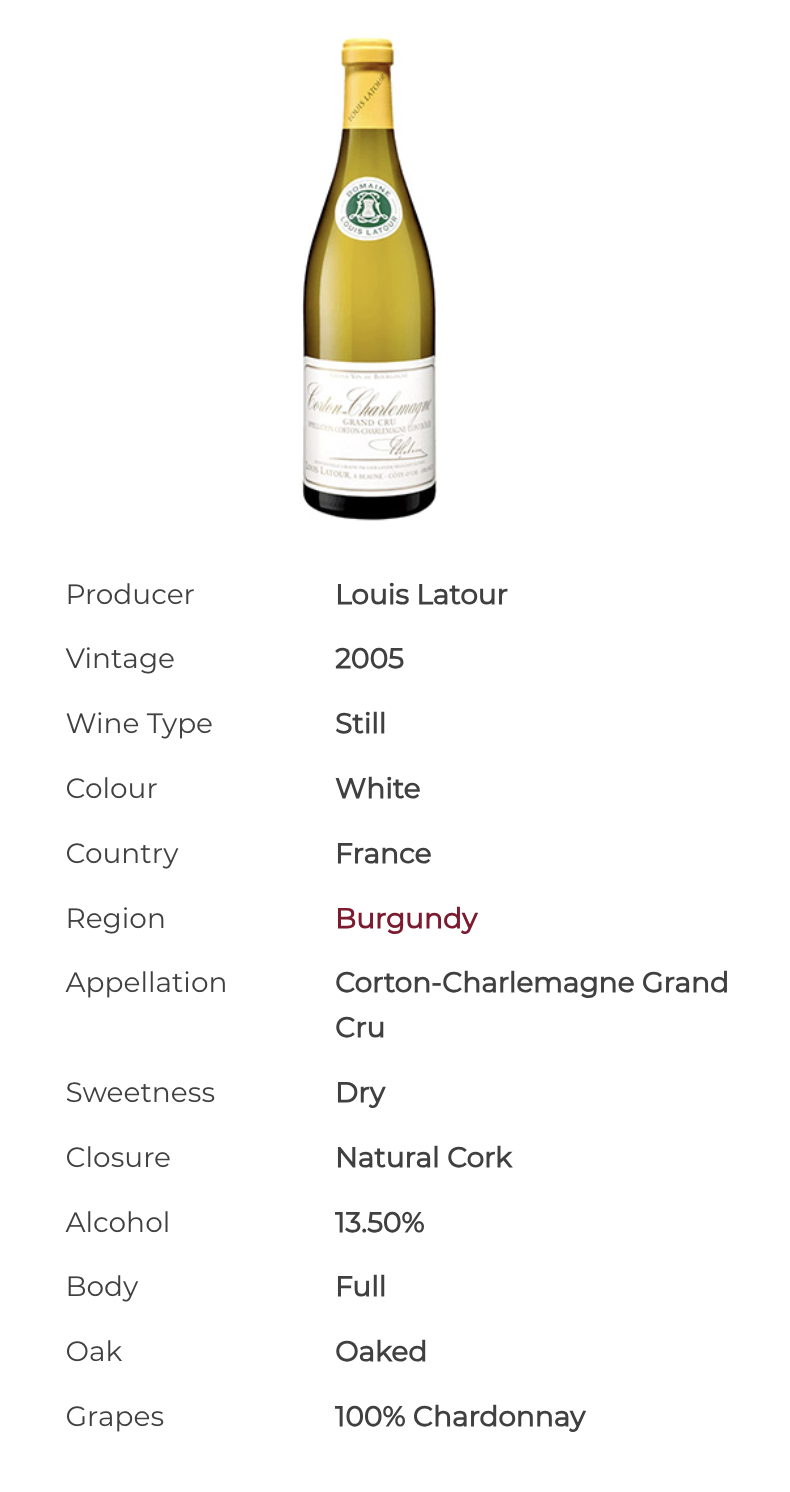 Drinking Window: 2021 – 2026
Drinking Window: 2021 – 2026Louis Latour, Corton-Charlemagne Grand Cru, Burgundy, 2008
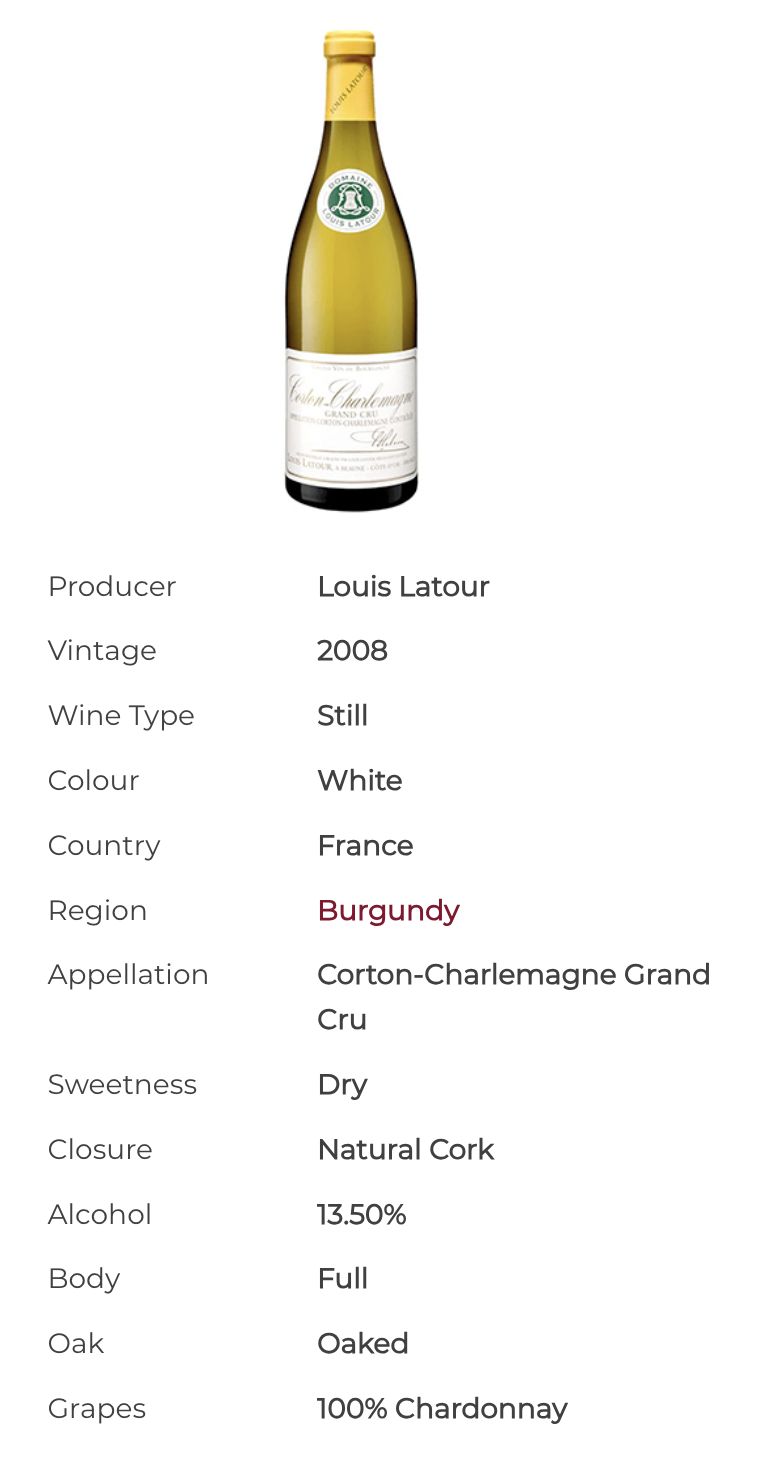 Drinking Window: 2021 – 2031
Drinking Window: 2021 – 2031Louis Latour, Corton-Charlemagne Grand Cru, Burgundy, 2009
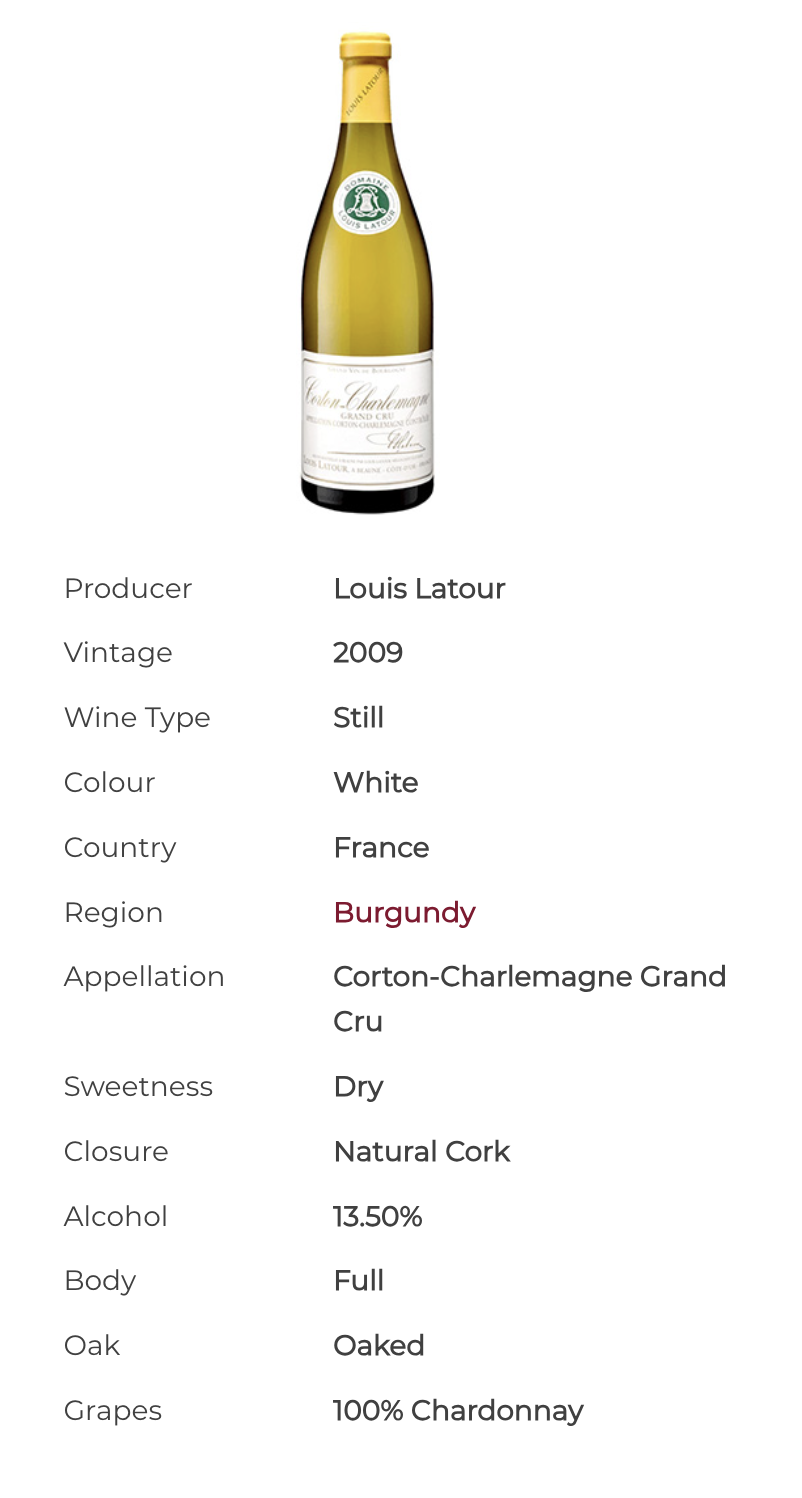 Drinking Window: 2021 – 2028
Drinking Window: 2021 – 2028Louis Latour, Corton-Charlemagne Grand Cru, Burgundy, 2010
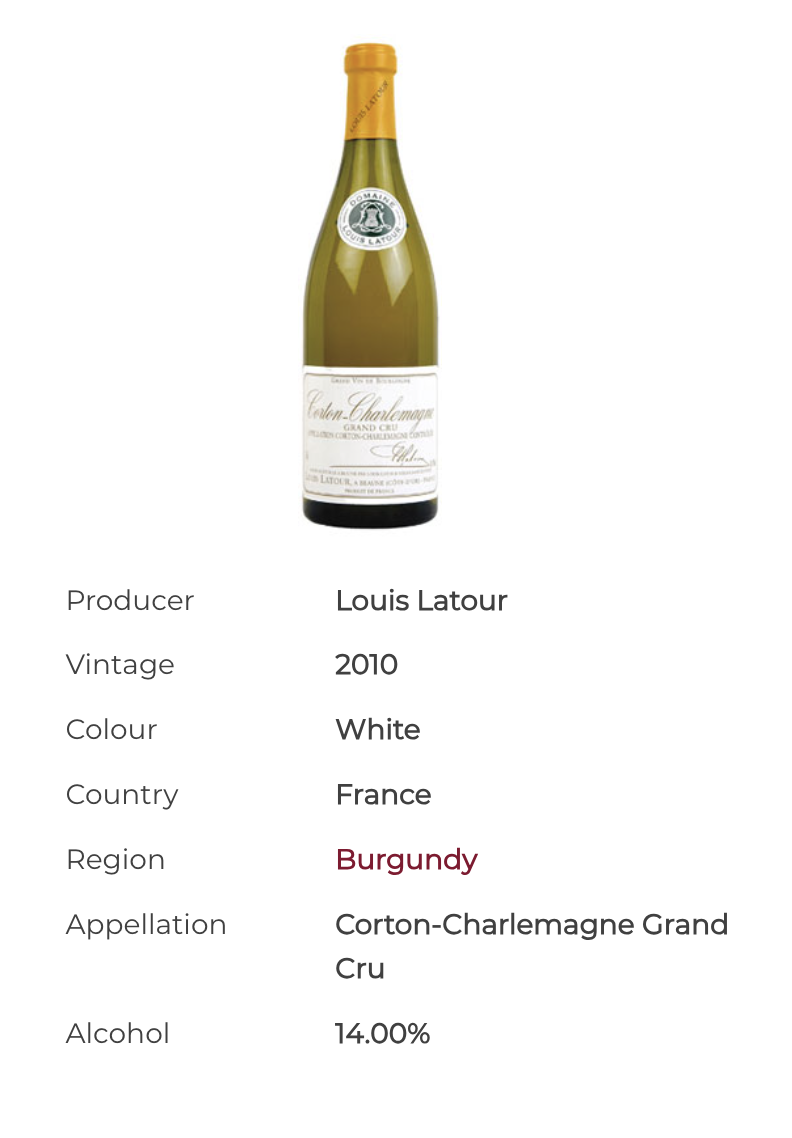 Drinking Window: 2021 – 2031
Drinking Window: 2021 – 2031Louis Latour, Corton-Charlemagne Grand Cru, Burgundy, 2011
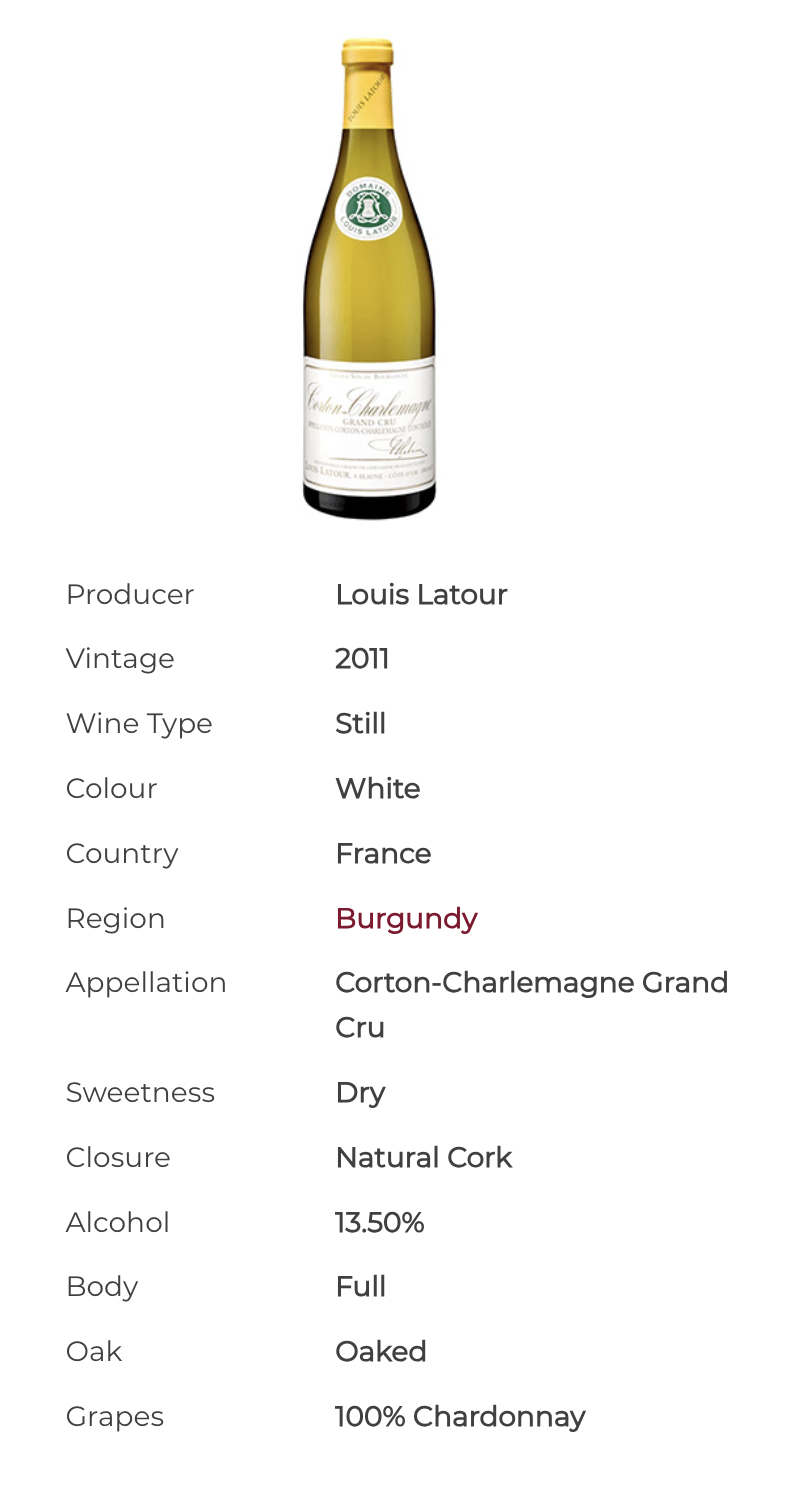 Drinking Window: 2021 – 2025
Drinking Window: 2021 – 2025Louis Latour, Corton-Charlemagne Grand Cru, Burgundy, 2013
 Drinking Window: 2022 – 2027
Drinking Window: 2022 – 2027Louis Latour, Corton-Charlemagne Grand Cru, Burgundy, 2015
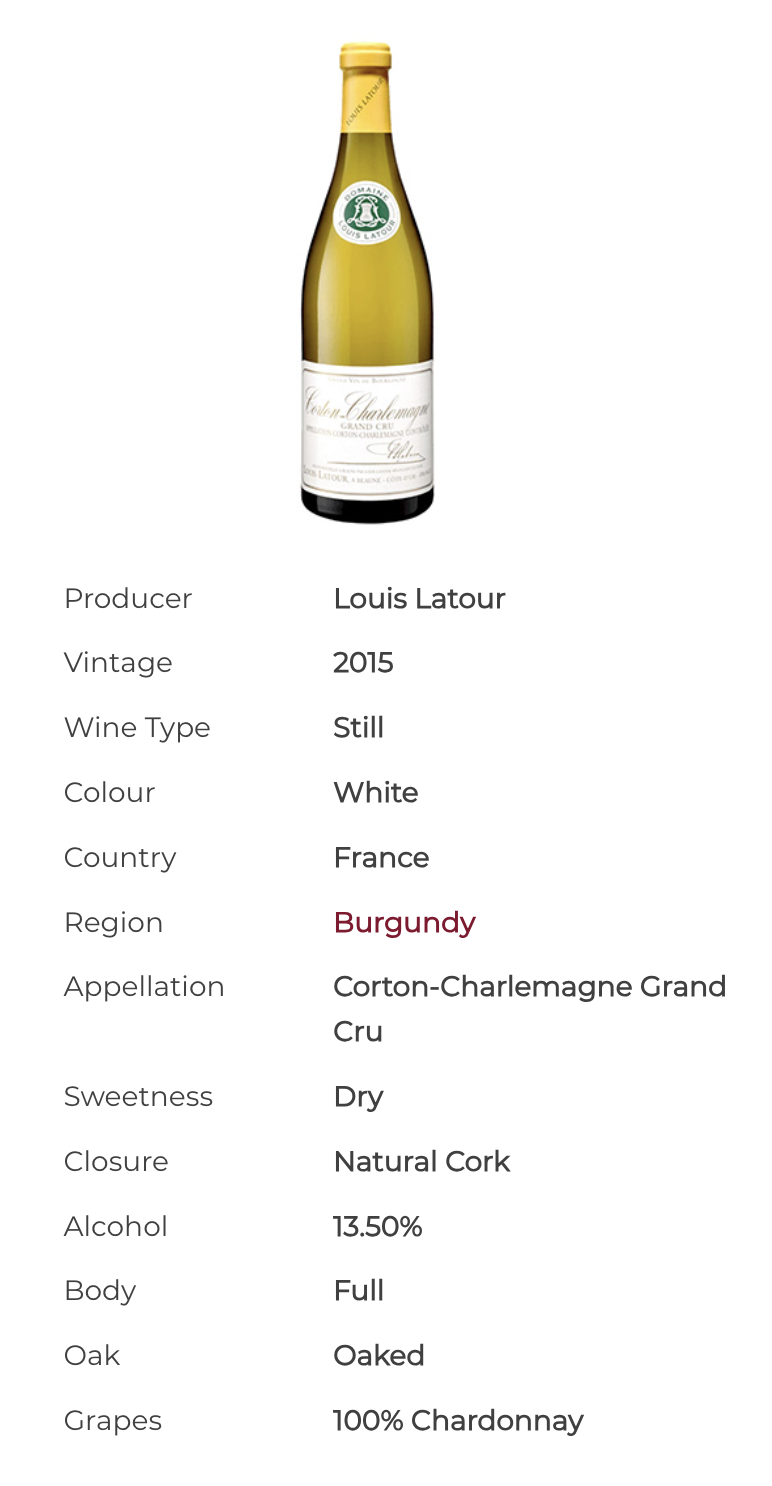 Drinking Window: 2025 – 2030
Drinking Window: 2025 – 2030Louis Latour, Corton-Charlemagne Grand Cru, Burgundy, 2017
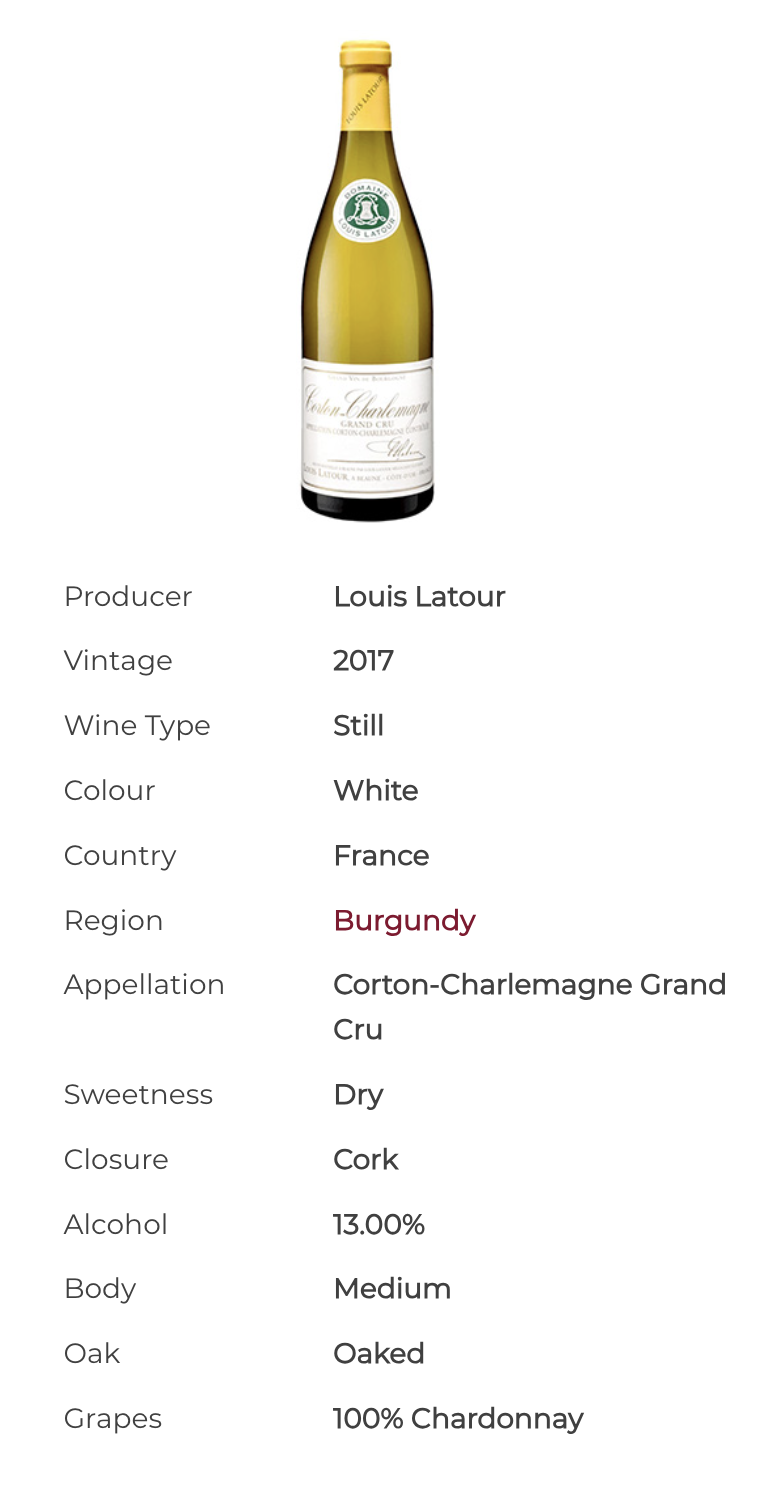 Drinking Window: 2027 – 2040
Drinking Window: 2027 – 2040Louis Latour, Corton-Charlemagne Grand Cru, Burgundy, 2018
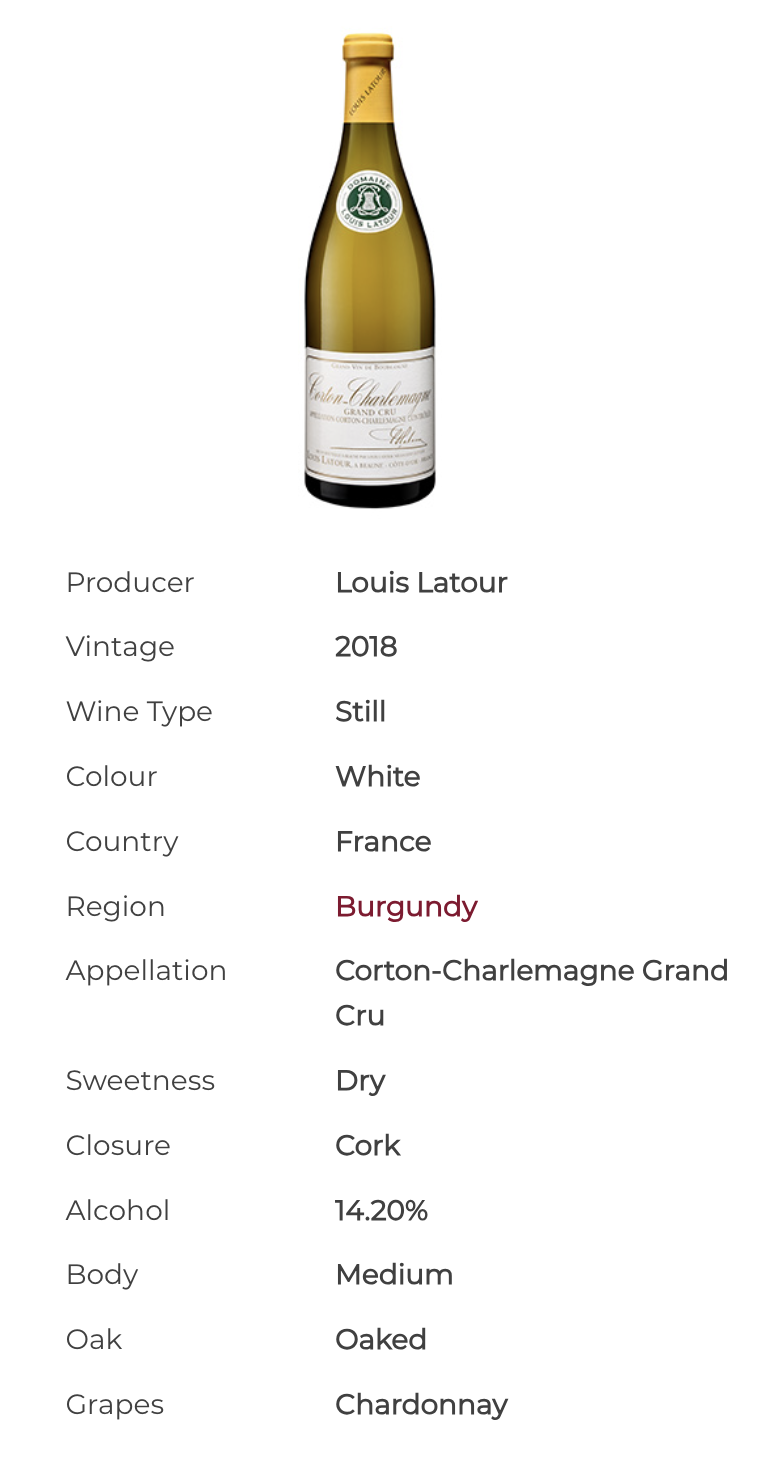 Drinking Window: 2026 – 2036
Drinking Window: 2026 – 2036New Bordeaux Varieties
If this keeps up, the French will need to stop complaining about bureaucratic delays. In just two years, the Institut National de l’Origine et de la Qualité (INAO), the regulatory body for French wines, has approved six new grape varieties that can be planted in Bordeaux and included in the blend of the wines. … Read more
Il Poggiolo, Brunello di Montalcino DOCG (Tuscany, Italy) 2015
($70, Enotec Imports, Inc):  A paradox, the traditionally framed Il Poggiolo Brunello marries the ripeness of the 2015 vintage with a lovely austerity. Not a blowsy wine, it combines dark cherry-like fruit with a core of minerals. Importantly, especially for the vintage, it has great acidity, which imparts a wonderful vivacity to the wine. … Read more
A paradox, the traditionally framed Il Poggiolo Brunello marries the ripeness of the 2015 vintage with a lovely austerity. Not a blowsy wine, it combines dark cherry-like fruit with a core of minerals. Importantly, especially for the vintage, it has great acidity, which imparts a wonderful vivacity to the wine. … Read more
Rodney Strong Vineyards, Chalk Hill, Sonoma County (California) Chardonnay 2018
($22):  It is not surprising that Rodney Strong’s Chalk Hill Chardonnay continues to be an outstanding wine. If anyone knows where to grow Chardonnay in Sonoma, it’s Rodney Strong. He was bottling a Chardonnay under that label before there even was a Chalk Hill AVA. … Read more
It is not surprising that Rodney Strong’s Chalk Hill Chardonnay continues to be an outstanding wine. If anyone knows where to grow Chardonnay in Sonoma, it’s Rodney Strong. He was bottling a Chardonnay under that label before there even was a Chalk Hill AVA. … Read more
Anselmo Mendes, Monção e Melgaço (Vinho Verde, Portugal) Alvarinho “Muros Antigos” 2019
($15): 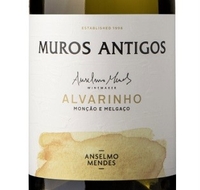 Vinho Verde, Portugal’s largest appellation, lies in that country’s northwest corner, bordering Spain. It’s known for racy high-acid wines. Some, sadly, provide little more than acidity. Enter Anselmo Mendes. His Muros Antigos delivers the mouth-cleansing zippy edge, but in addition there’s a lovely floral quality and an engaging lime-like quality. … Read more
Vinho Verde, Portugal’s largest appellation, lies in that country’s northwest corner, bordering Spain. It’s known for racy high-acid wines. Some, sadly, provide little more than acidity. Enter Anselmo Mendes. His Muros Antigos delivers the mouth-cleansing zippy edge, but in addition there’s a lovely floral quality and an engaging lime-like quality. … Read more
Anselmo Mendes, Monção e Melgaço (Vinho Verde, Portugal) “Alvarinho Contacto” 2019
($19): 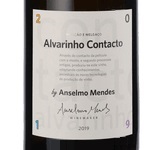 Monção e Melgaço, one of the nine official sub-regions of Vinho Verde, lies on the southern border of Galicia, the Spanish province that occupies the northwest corner of the Iberian Peninsula. The Alvarinho grape reigns here. Mendes is a new wave producer aiming to show what can be done with this grape in this sub-region, announcing his wines with a bottle engraved with the name of sub-region, the grape, as well as his name. … Read more
Monção e Melgaço, one of the nine official sub-regions of Vinho Verde, lies on the southern border of Galicia, the Spanish province that occupies the northwest corner of the Iberian Peninsula. The Alvarinho grape reigns here. Mendes is a new wave producer aiming to show what can be done with this grape in this sub-region, announcing his wines with a bottle engraved with the name of sub-region, the grape, as well as his name. … Read more
Donnafugata, Terre Siciliane IGT (Sicily, Italy) “Tancredi” 2016
($39, Folio Fine Wine Partners):  While Donnafugata maintains a traditional focus on indigenous Sicilian grapes, such as Nero d’Avola, they also have planted international ones, such as Cabernet Sauvignon, and unusual ones, such as Tannat. Those three grapes comprise the majority of the blend of Tancredi. … Read more
While Donnafugata maintains a traditional focus on indigenous Sicilian grapes, such as Nero d’Avola, they also have planted international ones, such as Cabernet Sauvignon, and unusual ones, such as Tannat. Those three grapes comprise the majority of the blend of Tancredi. … Read more
Donnafugata, Cerasuolo di Vittoria DOCG (Sicily, Italy) “Floramundi” 2017
($30, Folio Fine Wine Partners):  Cerasuolo di Vittoria, located in southeastern Sicily, is that island’s only DOCG wine. Regulations require that Nero d’Avola comprise at least 50, but no more than 70, percent of the blend. Frappato fills out the blend. … Read more
Cerasuolo di Vittoria, located in southeastern Sicily, is that island’s only DOCG wine. Regulations require that Nero d’Avola comprise at least 50, but no more than 70, percent of the blend. Frappato fills out the blend. … Read more
Jean Pascal et Fils, Puligny-Montrachet (Burgundy, France) “Les Enseignères” 2019
($56, Jeanne-Marie de Champs Selection):  This lieu-dit, entitled only to a village appellation, lies across the road, but downhill from the Grand Cru Bienvenue-Bâtard-Montrachet. Even in Jean Pascal’s talented hands, this village wine is not in the Grand Cru category, but it is more impressive than many producers’ premier cru — and at a far more attractive price. … Read more
This lieu-dit, entitled only to a village appellation, lies across the road, but downhill from the Grand Cru Bienvenue-Bâtard-Montrachet. Even in Jean Pascal’s talented hands, this village wine is not in the Grand Cru category, but it is more impressive than many producers’ premier cru — and at a far more attractive price. … Read more
Domaine Michel Bouzereau et Fils, Meursault (Burgundy, France) “Les Grands Charrons” 2018
($68, Jeanne-Marie de Champs Selection):  It’s hard to go wrong with the wines from Domaine Michel Bouzereau, a leading name in Meursault. Here are my notes for this wine from a visit in November 2019: “Good as most people’s 1er cru. … Read more
It’s hard to go wrong with the wines from Domaine Michel Bouzereau, a leading name in Meursault. Here are my notes for this wine from a visit in November 2019: “Good as most people’s 1er cru. … Read more
Domaine Paul Pernot et ses Fils, Bourgogne Blanc Côte d’Or (Burgundy, France) 2019
($30, Jeanne-Marie de Champs Selection):  Domaine Paul Pernot, one of the top producers in Puligny-Montrachet, opts to use the new appellation, Bourgogne Côte d’Or, for this wine that they formerly labeled as Bourgogne Blanc. The new appellation requires that the grapes come exclusively from the Côte d’Or, the heart of Burgundy.… Read more
Domaine Paul Pernot, one of the top producers in Puligny-Montrachet, opts to use the new appellation, Bourgogne Côte d’Or, for this wine that they formerly labeled as Bourgogne Blanc. The new appellation requires that the grapes come exclusively from the Côte d’Or, the heart of Burgundy.… Read more
Domaine Lamarche, Vosne-Romanée Premier Cru (Burgundy, France) Les Chaumes 2018
($140, Jeanne-Marie de Champs Selection): 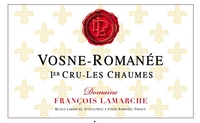 Vosne-Romanée could be considered the most revered village in Burgundy. Its wines, even those sporting just a village appellation, carry hefty price tags. And with the 25 percent tariffs, the prices are truly extraordinary. That said, this is a pretty extraordinary wine. … Read more
Vosne-Romanée could be considered the most revered village in Burgundy. Its wines, even those sporting just a village appellation, carry hefty price tags. And with the 25 percent tariffs, the prices are truly extraordinary. That said, this is a pretty extraordinary wine. … Read more
Rodney Strong Vineyards, Alexander Valley (Sonoma County, California) “Symmetry” Meritage 2016
($55):  Symmetry, according to Rodney Strong’s website, means balance. And I must admit, this wine is aptly named. It’s a suave complex Cabernet Sauvignon-dominant (70%) blend of five Bordeaux varieties. Roughly equal amounts of Merlot, Malbec, Cabernet Franc and Petit Verdot fill out the blend. … Read more
Symmetry, according to Rodney Strong’s website, means balance. And I must admit, this wine is aptly named. It’s a suave complex Cabernet Sauvignon-dominant (70%) blend of five Bordeaux varieties. Roughly equal amounts of Merlot, Malbec, Cabernet Franc and Petit Verdot fill out the blend. … Read more
Fanetti – Tenuta S. Agnese, Vino Nobile di Montepulciano DOCG (Tuscany, Italy) Riserva 2015
($33, Enotec Imports, Inc):  Fanetti, one of the great names for Vino Nobile di Montepulciano, has produced a fabulous 2015 Riserva from their Tenuta S. Agnese estate. Traditionally framed, that is, not all gussied up with oak and over ripe fruit, the dark cherry-like fruit of Sangiovese shines. … Read more
Fanetti, one of the great names for Vino Nobile di Montepulciano, has produced a fabulous 2015 Riserva from their Tenuta S. Agnese estate. Traditionally framed, that is, not all gussied up with oak and over ripe fruit, the dark cherry-like fruit of Sangiovese shines. … Read more
Buli, Toscana IGT (Tuscany, Italy) “Estate 44” 2016
($20, Dark Star Imports):  Estate 44 pays tribute to the Allied soldiers, including the owner’s father, who liberated Tuscany in the summer of 1944. A blend of Sangiovese (60%) Cabernet Sauvignon (20%) and equal amounts of Syrah and Merlot, it is more muscular than Buli’s 515 bottling, but has the same grace, suaveness and structure. … Read more
Estate 44 pays tribute to the Allied soldiers, including the owner’s father, who liberated Tuscany in the summer of 1944. A blend of Sangiovese (60%) Cabernet Sauvignon (20%) and equal amounts of Syrah and Merlot, it is more muscular than Buli’s 515 bottling, but has the same grace, suaveness and structure. … Read more
Buli, Toscana IGT (Tuscany, Italy) Sangiovese “515” 2016
($20, Dark Star Imports):  Robert Buly, an American who owns Buli, was drawn to Italy by heritage: his father married an Italian woman from Tuscany soon after WWII ended. On their website, he jokes that his father met his mother while on the search for red wine to drink. … Read more
Robert Buly, an American who owns Buli, was drawn to Italy by heritage: his father married an Italian woman from Tuscany soon after WWII ended. On their website, he jokes that his father met his mother while on the search for red wine to drink. … Read more
Piper-Heidsieck, Champagne (France) Brut Cuvée NV
($45, Folio Fine Wine Partners):  Founded in 1785, this venerable Champagne firm passed into the hands of the Descours family about a decade ago. Its non-vintage Brut has since taken a leap in quality. I remember Piper-Heidsieck as an ordinary Champagne a decade ago, lean and angular. … Read more
Founded in 1785, this venerable Champagne firm passed into the hands of the Descours family about a decade ago. Its non-vintage Brut has since taken a leap in quality. I remember Piper-Heidsieck as an ordinary Champagne a decade ago, lean and angular. … Read more
Domaine Bart, Marsannay (Burgundy, France) Clos du Roy 2018
($58, Jeanne-Marie de Champs Selection):  Domaine Bart is an A-list producer. Of course, their Grand Cru Bonnes Mares and Charmes-Chambertin are stunning. But, if you are looking for something that does not require taking out a mortgage before purchasing, look to their array of wines from Marsannay, a sleepy village north of Gevrey-Chambertin. … Read more
Domaine Bart is an A-list producer. Of course, their Grand Cru Bonnes Mares and Charmes-Chambertin are stunning. But, if you are looking for something that does not require taking out a mortgage before purchasing, look to their array of wines from Marsannay, a sleepy village north of Gevrey-Chambertin. … Read more
Domaine René Leclerc, Gevrey-Chambertin (Côte de Nuits, Burgundy, France) Clos Prieur 2018
($77, Jeanne-Marie de Champs Selection): 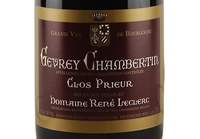 The Clos Prieur vineyard, which is just across the road from Mazi-Chambertin, a Grand Cru, covers two appellations. The upper part is Premier Cru and lower part carries a village appellation. But once again, producer can trump geography. … Read more
The Clos Prieur vineyard, which is just across the road from Mazi-Chambertin, a Grand Cru, covers two appellations. The upper part is Premier Cru and lower part carries a village appellation. But once again, producer can trump geography. … Read more
Château de la Maltroye, Chassagne Montrachet 1er Cru (Burgundy, France) Clos du Château de la Maltroye 2018
($80, Jeanne-Marie de Champs Selection):  This 2018 Clos du Château de la Maltroye, a monopole of the Château de la Maltroye, is one of the best red wines from Chassagne-Montrachet I’ve ever had. It’s the epitome of power and grace. Savory elements complement gorgeous dark fruity ones. … Read more
This 2018 Clos du Château de la Maltroye, a monopole of the Château de la Maltroye, is one of the best red wines from Chassagne-Montrachet I’ve ever had. It’s the epitome of power and grace. Savory elements complement gorgeous dark fruity ones. … Read more
Gilles Lafouge, Auxey-Duresses 1er Cru (Burgundy, France) Les Duresses Jeanne-Marie de Champs Selection 2018
($43):  With prices of Burgundy having gone through the roof, it’s a delight to find one that’s affordable, at least by Burgundy standards. As I’ve long maintained, villages off the beaten path, such as Auxey-Duresses which sits behind Meursault, and talented producers who, for whatever reason, have never gotten the praise they deserve, like Gilles Lafouge, is the combination consumers should seek out. … Read more
With prices of Burgundy having gone through the roof, it’s a delight to find one that’s affordable, at least by Burgundy standards. As I’ve long maintained, villages off the beaten path, such as Auxey-Duresses which sits behind Meursault, and talented producers who, for whatever reason, have never gotten the praise they deserve, like Gilles Lafouge, is the combination consumers should seek out. … Read more
A Guiltless Way to Enjoy Sauternes
I love Sauternes, but rarely drink that sweet wine. One reason is that the classic combination of foie gras and Sauternes hardly ever comes up these days. But the major reason is that a little goes a long way. One glass as dessert is divine. … Read more
Changes and Consistency at Merry Edwards
 Changes abound at Merry Edwards Winery, one of California’s leading Pinot Noir producers. In 2019, Louis Roederer, the Champagne house, purchased the winery, adding it to their already impressive group of California properties. With the 2018 vintage, Heidi von der Mehden took over from Merry Edwards herself as winemaker after working with her since 2015. … Read more
Changes abound at Merry Edwards Winery, one of California’s leading Pinot Noir producers. In 2019, Louis Roederer, the Champagne house, purchased the winery, adding it to their already impressive group of California properties. With the 2018 vintage, Heidi von der Mehden took over from Merry Edwards herself as winemaker after working with her since 2015. … Read more
Merry Edwards Winery, Sonoma Coast (Sonoma County, California) Pinot Noir 2018
($54):  Changes abound at Merry Edwards Winery, one of California’s leading Pinot Noir producers. In 2019, Louis Roederer, the Champagne house, purchased the winery. With the 2018 vintage, Heidi von der Mehden, who worked with Merry Edwards since 2015, took the reins as winemaker. … Read more
Changes abound at Merry Edwards Winery, one of California’s leading Pinot Noir producers. In 2019, Louis Roederer, the Champagne house, purchased the winery. With the 2018 vintage, Heidi von der Mehden, who worked with Merry Edwards since 2015, took the reins as winemaker. … Read more
